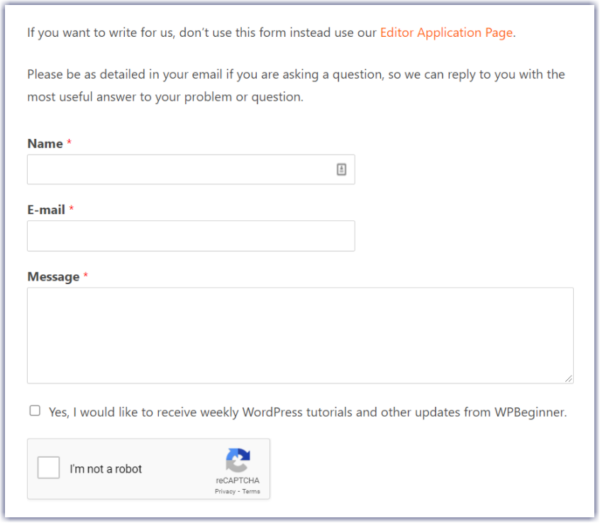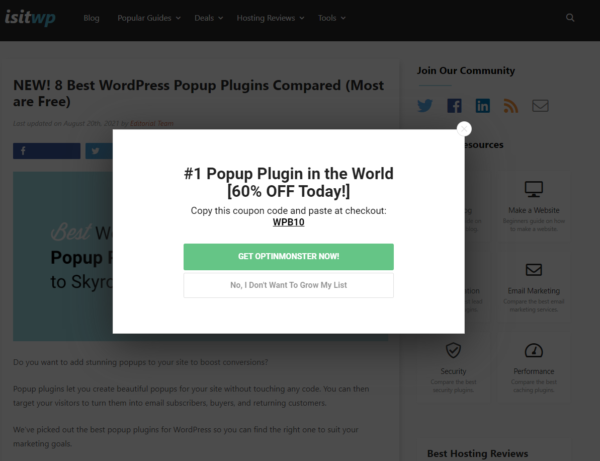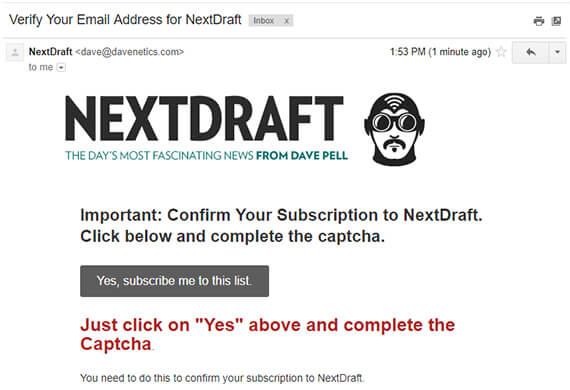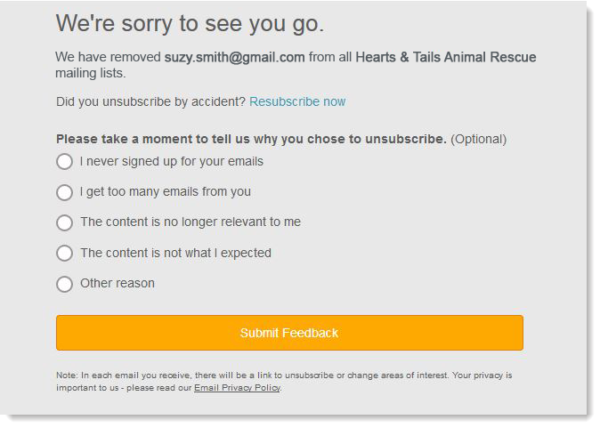
The best-known ‘secret’ to a business’s growth is email marketing.
If you want to find more customers and land more B2B deals, you need to build your email list.
So, you need to nurture your email list by sending them relevant and engaging newsletters. Sending marketing emails is a great way to remind audiences that you can help them with your products and services.
But despite how useful and impactful email marketing is, you shouldn’t jump into it without setting it up correctly.
If you don’t follow important practices when doing your email marketing, you could get into hot water.
Here’s why.
Ever since the General Data Protection Regulation (GDPR) act was passed in the European Union in 2018, it became critical for businesses to gather consent before collecting people’s information or contacting them.
You need to set up your email marketing so that it complies with global laws on consent and data collection.
In this post, we’ll look at ways you can ensure that your email marketing is legal.
Always obtain consent to send email messages
Today, it’s expected for all businesses to explicitly gain consent before sending marketing emails to your audience. Best-in-class email providers require it and make it part of their email and opt-in popup templates to ask for permission.
Acts like the GDPR are meant to protect businesses as well as customers.
Obtaining a person’s permission before signing them up for newsletters ensures that your leads are actually interested in your business. And you won’t waste time or resources on people who are never going to buy from you.
Always remember that before you can send marketing messages, you need consent from your user. How can you do this? The rest of this post will give you practical and useful tips that you can use.
Add an unchecked subscription box to your forms
Very often, businesses set up contact forms and other forms and also use them to automatically add people to their email list.
While this is a useful practice to get more people to subscribe, you need to do this with full transparency.
The last thing you should do is to sign up people simply because they sent you a message through a contact form.
For one thing, it’s a legal requirement to gather consent to add people to your email list even if they reach out to your first and won’t mind getting your emails. For another, it can create a negative reputation for your brand if users find that they’re getting marketing messages just because they used your form.
So, always add an unchecked tick box to your forms that ask new users to also sign up for your newsletter when they fill out a form on your website.

Use an opt-in popup form
A perfectly legitimate and effective way to get more subscribers and grow your email list is to use an opt-in popup form.
If you’re using content management software like WordPress, you can add an opt-in popup plugin to your website and easily create an awesome popup to capture your audience’s emails.
You can trigger your opt-in popup so that it appears under different conditions:
- When a user has reached the end of a page
- After they’ve spent a specific amount of time on your website
- When they’re just about to leave
- When people click specific links on your page
Once the trigger goes off, an attractive opt-in popup appears with a value proposition for your users.
For example, tell people that they’ll be the first to know about special discounts on your website. Or simply ask them to sign up to get exclusive news and updates. You can also make the offer to sign up for your newsletter more compelling by offering users a lead magnet.

A lead magnet is a free gift or digital download people access when they subscribe to your email marketing.
In all these cases, your audience has to agree to submit their email and acknowledge that they’re opting in to receive marketing emails from your business. With this explicit action, you’re winning more email subscribers while complying with legal requirements.
Activate a double-opt-in feature
It can happen that a user accidentally subscribes to your newsletter. To avoid instances like this, activate a double-opt-in feature when people subscribe to your website.
What happens here is that after a user signs up on your website, they’ll get an email that asks them to re-confirm that they’re opting in.

While this seems like an unnecessary second step, I’ve found that it gives good results because it gives people a chance to check that your email is appearing in their inboxes. If your email lands in the spam folder, they can manually move it to your inbox.
It’s also good practice to make sure that your subscribers are actually interested in getting content from you.
Make it easy for users to unsubscribe
Even when you’ve gathered permission and provided your audience with good quality content, it’s possible that they’ll want to unsubscribe.
An email subscriber should always have the option to stop receiving communication from a business. And it’s important that you enable this by making it easy for users to unsubscribe from your content.
If you’re using a good email marketing platform like Constant Contact, then doing this will be easy.

Constant Contact’s ready-made templates automatically include “Unsubscribe” and “Update Profile” links in the email footers, so your subscribers can easily update their subscription preferences. In addition, by default, a comment box is included to allow contacts who click the “Unsubscribe” link the ability to provide feedback about why they’re unsubscribing.

If you don’t use Constant Contact, I suggest that when contacts click the unsubscribe button, you redirect them to a landing page where they have the option to say why they’re leaving. This gives you the opportunity to learn more about why your subscriber doesn’t want to receive your emails anymore.
You’ll learn whether you’ve been sending emails too often, whether your content is relevant, or other reasons that people no longer want to get content from you.
Provide your contact details
It’s good practice to add your company’s contact details in the footer of your email content. The CAN-SPAM Act and the United Kingdom’s PERC act mandate that businesses need to provide contact details so that users can unsubscribe from marketing messages at any time.
Many email marketing services also make it compulsory for you to add a legitimate address to create and launch your email campaigns.
Always add the relevant company details including an email and postal address. This adds legitimacy to your content and also helps you stay in line with the rules.
Never spam your audience
This should go without saying but many business owners make the mistake of pushing their promotional material without regard for their audience’s needs.
It’s in your best interest to provide tailored and relevant content through your newsletter. Instead of constant email updates about your latest sale, share a new and helpful blog post that answers people’s questions.
Offer your audience educational content or show them some behind-the-scenes news about your business. And as much as possible, personalize your content.
For example, you can send email newsletters related to purchases that your customers made. Or based on the links that people click in your former emails, you’ll be able to gauge what your audience likes and create new emails based on their actions.
Before sending an email, ask yourself, would you like to receive this content from your competition? If not, then something needs to change. Vary your content and make sure that you offer value to your subscribers. This will help you to avoid frustrating your customers and will also train email providers that your emails are legitimate.
Test your emails
Before you launch your email campaigns, it’s critical that you run a few tests first.
Send your email to people within your company or to a small group of customers. Use this experience as an opportunity to catch broken links, images that don’t load, and other issues.
It’s also possible to have typos and other content issues with your email no matter how careful you are. So, a test run is a good opportunity to catch problems you might have missed before.
This ensures that your audience isn’t bothered by content that looks spammy and you’ll keep your domain in good standing with email providers and your subscribers.
Send with confidence
Email marketing is a marketing activity that’s highly rewarding.
For every dollar spent on email marketing, you make $36 in returns. Very few other marketing activities give you such amazing results.
Now that you know how to make sure that your email marketing is legitimate and user-friendly, you can send your email campaigns with confidence.




